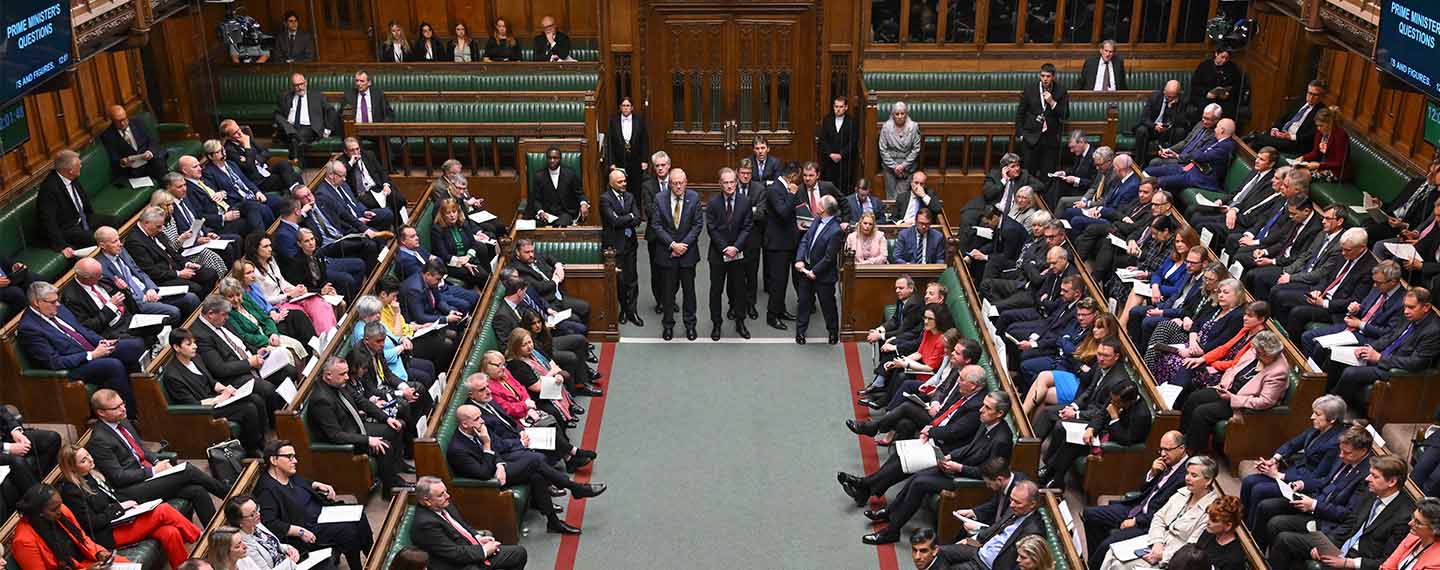Labour won a landslide victory in the UK general election in terms of seats in parliament, but not in votes. It obtained 411 of the 650 seats (63.2% of the total) on 33.8% of the vote compared with 202 seats in the 2019 election (31%) on 32.1% of the vote (see Figure 1). This is the largest gap on record between vote share and proportion of seats, raising questions about whether the first-past-the-post electoral system -FPTP- needs to be changed in order to better reflect how the electorate votes. Labour’s latest vote share is actually less than it achieved in 2017, when it lost to the Conservatives!
The UK’s Electoral Reform Society says FPTP is ‘bad for voters, bad for government and bad for democracy’.
Figure 1. Result of UK general elections 2024 and 2019 (seats and % of total votes cast)
| 2024 seats | % of votes | 2019 seats | % of votes | |
|---|---|---|---|---|
| Labour | 411 | 33.8 | 202 | 32.1 |
| Conservative | 121 | 23.7 | 365 | 43.6 |
| Liberal Democrats | 72 | 12.2 | 11 | 11.5 |
| Scottish National Party | 9 | 2.5 | 48 | 3.9 |
| Sinn Fein | 7 | 0.7 | 7 | 0.6 |
| Reform UK | 5 | 14.3 | — | — |
| Democratic Unionist | 5 | 0.6 | 8 | 0.8 |
| Green | 4 | 6.8 | 1 | 2.6 |
| Other | 16 | 5.4 | 8 | 4.9 |
| Total seats | 650 | 650 | ||
| Turnout | 60.0 | 60.0 | 67.3 | 67.3 |
Under FPTP, sometimes described as winner-takes-all, the candidate who wins the most votes in each constituency, even if only one more than the next party, is elected. It has been used in the UK since the Middle Ages and has generally given the UK stable governments, with both the Conservatives and Labour over the past 60 years tending to last their full five-year term in office until 2017, when Teresa May called a snap election in the hope of winning a bigger majority (which did not happen), and in 2019, when Boris Johnson went to the polls early.
FPTP is used in fewer than 50 countries. Many more use proportional representation (PR) systems. The former tends to favour the largest parties and those with strong regional support to the detriment of smaller parties without a geographically concentrated base. As a result, it often produces disproportionate results, as the latest UK election shows. While Labour’s share of seats was almost twice that of its slice of the vote, the hard-right Reform UK (the revamped Brexit party) got only five seats on 14.3% of the vote, while the Liberal Democrats won 72 on just 12.2% of the vote.
The incumbent Conservatives dropped from 365 seats in 2019 (43.6% of the vote and 56% of the seats) to 121 seats (23.7% and 18.6%, respectively). The combined vote share of the Conservatives and Reform (many of whose voters are disaffected Conservatives) was higher than that of Labour, but their combined number of seats was just under one third of Labour’s.
The UK’s Electoral Reform Society says FPTP is ‘bad for voters, bad for government and bad for democracy’. In return for the support of the Liberal Democrats in a coalition government (the party had long complained of FPTP), the Conservative David Cameron agreed to a referendum in 2011 on the electoral system. But the question asked was whether FPTP should be replaced by Alternative Vote (AV), also known as a preferential voting system, and not by PR.
Under AV voters rank candidates in order of preference. If any single candidate receives a majority of first-preference votes, that candidate is deemed elected. If no candidate clears this hurdle, the last-place candidate is eliminated and that candidate’s second preferences are reapportioned to others and so on until a candidate clears the threshold of 50% of the vote plus one. This method was rejected by 67% of voters on a turnout of 42%.
Spain uses the d’Hondt system of proportional representation (PR), with ‘closed lists’, which, by awarding a minimum of two seats to each of the 50 provinces, gives a bonus to the majority party as well as over-representing rural areas. In the 2023 election the Socialists won 121 of the 350 seats in congress (34.5%) on 33.1% of the vote, compared with 34.3% and 28%, respectively, in 2019 (see Figure 2).
Figure 2. Results of Spain’s general elections 2023 and 2019 (seats and % of total votes cast)
| 2023 seats | % of votes | 2019 | % of votes | |
|---|---|---|---|---|
| Popular Party | 137 | 33.1 | 89 | 20.8 |
| Socialists | 121 | 31.7 | 120 | 28.0 |
| VOX | 33 | 12.4 | 52 | 15.1 |
| Unidas Podemos | – | – | 35 | 12.9 |
| Sumar | 31 | 12.3 | – | – |
| Catalan Republican Left | 7 | 1.9 | 13 | 3.6 |
| Ciudadanos | – | – | 10 | 6.8 |
| J×Cat | 7 | 1.6 | 8 | 2.2 |
| EH Bildu | 6 | 1.4 | 5 | 1.1 |
| Basque Nationalist Party | 5 | 1.1 | 6 | 1.6 |
| Other parties | 3 | 1.3 | 5 | 0.9 |
| Total seats | 350 | 350 | ||
| Voter turnout (%) | 70.4 | 70.4 | 66.2 | 66.2 |
The PR system is more representative of the whole electorate and delivers fairer treatment of minority parties and independent candidates. It encourages people to vote and reduces apathy (voter turnout of 60% at the UK’s election was the lowest since 2001, compared with 70.4% in Spain’s 2023 election): fewer votes are ‘wasted’ as more people’s preferences are taken into account. It often leads to greater consensus in policy-making.
Spain had one-party governments between 1977 and January 2020, when Socialist leader Pedro Sánchez narrowly won parliamentary backing for the country’s first coalition government (with the hard-left Podemos) since the 1930s. But since it was a minority one, he was left reliant on a fragile patchwork of alliances with other parties to pass laws. This situation has prevailed since then, with Sumar replacing Podemos. The Socialists and Popular Party tended to last their full four-year term in office until 2015, when the political system fragmented with the entry into parliament first of two new parties, Podemos and the would-be centrist Ciudadanos, and subsequently a third, the hard-right VOX. Since 2015, Spain has had five general elections.
The disadvantages of the PR system are that it makes it easier for extreme parties to gain representation, as has been the case with Podemos (as of 2023 Sumar), on the left, and VOX, on the right; it can create political gridlock (as in Spain, where four of the five elections since 2015 were held between that year and 2019) and it favours coalitions which are not always the best course when only a strong majority government is able to push through much needed reforms (which some would argue is what Spain needs at the moment). But PR, more than FPTP, does better reflect a country’s political reality in all its complexity, however frustrating that might be for voters of the dominant parties. It also increases the risk of dysfunctional governments. So which is the fairer system, FPTP or PR? As more parties enter national politics, so PR seems the more just way to elect members of parliament. In the current polarised political climate, however, Spain perhaps could do with a dosis of FPTP as it might provide a more stable government, while the UK could do with PR to better represent parties that have considerable support but are rarely first past the post. No system is perfect.



